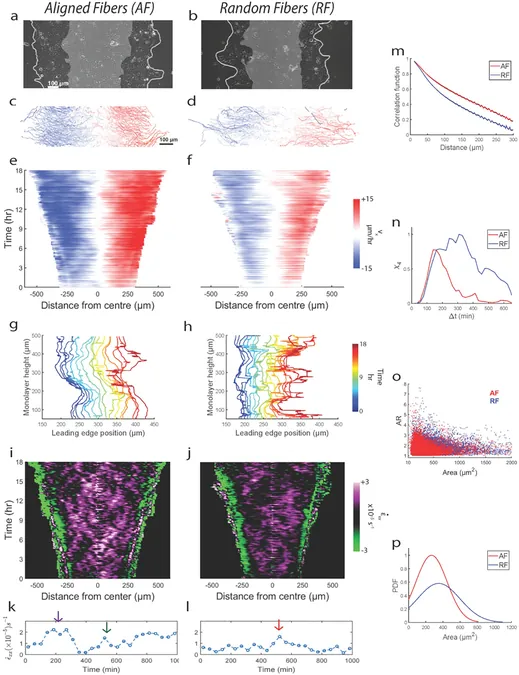
Revolutionary Discovery: Cells Can Move Faster with Less Force - What It Means for Cancer and Healing!
2025-01-09
Author: William
Introduction
In the fascinating field of mechanobiology, the prevailing belief has always been that the force generated by cells is crucial for their rapid movement. However, a groundbreaking study by researchers at the McKelvey School of Engineering, Washington University in St. Louis, is challenging this long-held notion. Their research has revealed that cells can migrate faster while generating significantly less force, defying what we thought we knew about cell mechanics.
Key Findings of the Research
Led by Professor Amit Pathak, the research team made a stunning discovery: when cells are attached to soft surfaces with aligned collagen fibers, they can move over 50% faster than when they are on random fibers, despite producing lower forces. This shifting paradigm may have profound implications, especially in the contexts of cancer metastasis and wound healing, where understanding cell movement could lead to innovative therapeutic strategies.
Challenging Traditional Beliefs
Traditionally, it was understood that cells constantly generate forces to overcome friction and drag as they migrate. Yet, this study suggests that under optimal environmental conditions, such as surfaces with aligned fibers, the need for high force diminishes. This insight is groundbreaking, as it implies that the environmental context can dramatically influence cellular migration speed and efficiency.
Experimental Evidence
The results of this research, published in PLOS Computational Biology, are not just theoretical; they stemmed from rigorous experimentation. The research team tracked the movement of human mammary epithelial cells, noting that their speed varied significantly with the type of surface they were on. In stiff environments, cells exhibited quicker movements compared to softer ones, where they tended to get stuck. However, the revelation about aligned collagen fibers has opened new avenues for exploring how cells navigate their environments.
Insights from Researchers
Pathak remarked on the surprising findings: "We initially assumed that applying force would automatically enhance movement. But our experiments demonstrated that environmental factors play a crucial role. It was akin to finding a smooth track for a train; the train can run faster even with less power."
Innovative Model Development
Postdoctoral researcher Amrit Bagchi played a pivotal role in this study, dedicating long hours during the COVID-19 pandemic to creating a specific soft hydrogel. With techniques involving magnets to align fibers, Bagchi meticulously constructed a model illustrating the cells' movement mechanics, where the cells' force-generating capabilities acted as a motor and the environmental conditions served as a clutch, facilitating movement.
Matrix Mechanosensing
The model developed by Bagchi introduces critical concepts, such as matrix mechanosensing, which not only sheds light on the forces at play during collective migration but may also apply to other known behaviors in cell migration like haptotaxis (movement towards a chemical gradient) and durotaxis (movement toward stiffer substrates).
Implications for Medical Science
In light of these findings, researchers are now equipped with a unified framework to explore different aspects of cell movement, which could lead to significant advancements in medical science. This could pave the way for novel treatments targeting cancer spread and improving wound healing, thereby revolutionizing how we understand and approach cell behavior.
Conclusion
Stay tuned for further updates on this exciting research as scientists continue to peel back the layers of cellular dynamics!



 Brasil (PT)
Brasil (PT)
 Canada (EN)
Canada (EN)
 Chile (ES)
Chile (ES)
 Česko (CS)
Česko (CS)
 대한민국 (KO)
대한민국 (KO)
 España (ES)
España (ES)
 France (FR)
France (FR)
 Hong Kong (EN)
Hong Kong (EN)
 Italia (IT)
Italia (IT)
 日本 (JA)
日本 (JA)
 Magyarország (HU)
Magyarország (HU)
 Norge (NO)
Norge (NO)
 Polska (PL)
Polska (PL)
 Schweiz (DE)
Schweiz (DE)
 Singapore (EN)
Singapore (EN)
 Sverige (SV)
Sverige (SV)
 Suomi (FI)
Suomi (FI)
 Türkiye (TR)
Türkiye (TR)
 الإمارات العربية المتحدة (AR)
الإمارات العربية المتحدة (AR)